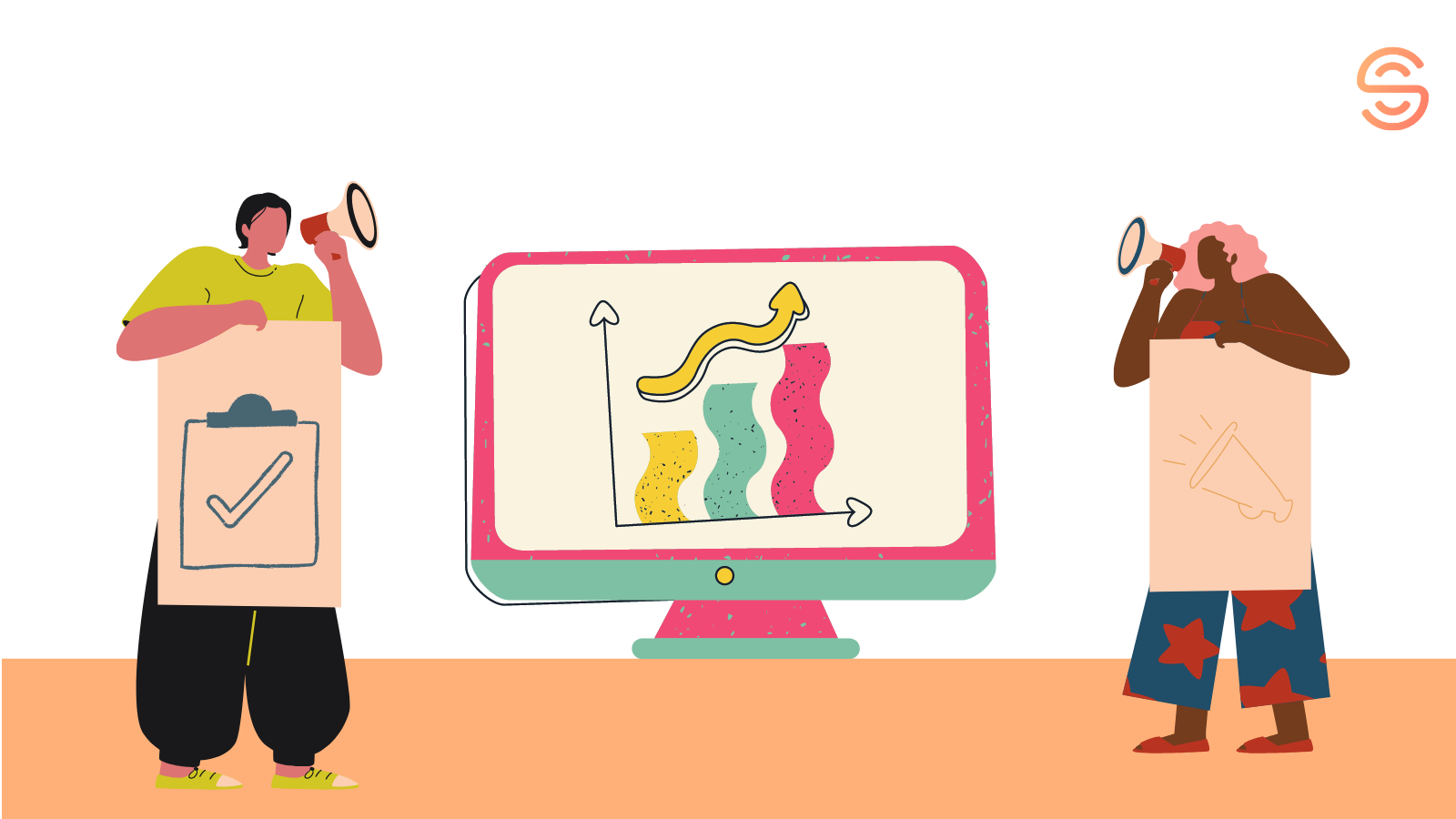20 Ideas to Make an Outstanding CTA and Generate Way More B2B Leads in 2024
August 16, 2023 9 min. read

Try AI-Driven Insights
Monitoring for Free
Discover new business ideas and growth opportunities using
our AI-powered insights monitoring tool
Do you expect your readers to take an action after visiting your landing page, reading an ad, email, or blog post? Do you want them to book a demo, buy your product, follow the link, or read more? We bet you do.
Then, speak up!
Don’t use hidden messages or hinting; to be heard, tell them directly. That’s when you will need an appealing call-to-action (CTA). A clear CTA guides prospects towards your marketing goals and secures then from guessing where they can find the information they need. You know how irritating useless can clicking be, huh?
So, a distinct CTA is a must-have elements that will help your business grow. But how can you make it appealing, engaging, clickable, and, in the end, converting?
There are several ”behind-the-scenes” components of an effective CTA, including creative design, catchy words, and proper location. Today, we discuss some of them and, in the end, share the most critical ingredient of a successful CTA.
Can’t wait to learn our 20 tips for creating killer CTAs? Let’s get started!
Make Your CTA Text More Appealing and Relevant:
1. Bring value. Always think about how your offer will help your prospects. What’s in it for them? Stress benefits over features. Instead of just saying ”Get your free B2B email checklist,” try to add a brief and straightforward description of your offer and how prospects will benefit from it. Then, end it with the ”Generate more B2B leads” button.
2. Be specific and brief. Keep the CTA on a button no longer than 5 words. Brevity is your secret power. If you struggle with creating such a short but effective CTA, let AI do the creative part for you. 😉
3. Start with an action verb. Even one-word clear commands like ”buy,” ”order,” ”download,” or ”consult” convert better than simply stating your offer like ”Free e-book” or ”Your ticket.”
4. Use emotional and powerful words. Don’t hesitate to use trigger words. Something like ”Join for free,” ”Order with a discount,” or ”Get my e-book right now!” can work perfectly. Check CoSchedule”s list of 54 words to use.
5. Add numbers. People like knowing details when it comes to savings and discounts. “Buy today and save 30%” sounds more substantial than just “Buy today!”
6. Address from the first person. If this is applicable (like selling tickets to a webinar), let your CTA sound like “I’m going!” or “Give me my ticket” instead of the usual “Buy” or “Order now.”
7. Create urgency. We bet you know how this works, right? A “Buy now” CTA motivated by the last day of discount or an offer expiring in three hours works perfectly. But don’t provoke the fear of missing out (FOMO) too often, and always keep your promise.
8. Ask for one action. Try not to confuse your visitors with multiple choices: ask for just one action. Consider it a rule: one button — one action. Don’t distract people from the main appeal.
Improve the CTA Button Design:
9. Create strong visuals. This step is essential for Facebook or Instagram ads. Once the video, infographics, or video-sketch are engaging, you will not need more than a simple “Learn More” button.
10. Make a bright, high-contrast button. Your CTA button should be attractive and noticeable but still fit the website, email, landing page, or ad conceptual design. Try green or blue buttons and apply the same color for the text and button background. This will help to contrast the button from the rest of the page. And no blinking, please!
11. Apply bold text. This seems to be a common practice, and it really works well.
12. Allow some free space around the button. Don’t insert the CTA button right into text. Keeping some negative space around your button will make your CTA easily identifiable and help your prospect find and follow it easily.
13. Place your CTAs properly. If this is a website, put your CTA button on the first screen on your home page and, ideally, somewhere on the “F” trajectory as we read left to right and top to down. The number of CTA buttons depends on the length of your landing page.
Since you only have seconds before the reader leaves your resource, embed the CTA close to the top of the landing page. However, follow the logic of your copywriting and put the “Read more” link after the introductory text and not before.
Often you will need several buttons with the same CTA on one page to ensure your reader doesn’t have to scroll back to buy from you. But avoid placing two CTAs on one screen.
14. Introduce popping up, and slide-in offers. This will work on your site or blog, and it’s a perfect way to present your lead magnet or promote a special offer. This way, you can be sure your prospect is 100% aware of your offer. And, once rejected or ignored, still keep the minimized window easily available to the user in case he/she changes his/her mind.
15. Try exit-intent buttons. When your website visitor or blog reader is going to leave the page, let the offer pop-up once again. Be creative with the “no” option, like: “Let someone else get my e-book.”
Optimize Your Mobile and Desktop Versions:
16. Make sure your page loads quickly. Otherwise, visitors may never even see your CTA. 😉
17. Consider the mobile view. We live in a smartphone reality, so keep in mind that some users may go to your website via mobile phones. Double-check how your buttons are displayed on Android and iOs. And enable call extensions because people are ready to act right away once they find the necessary info on their smartphone.
18. Mind the web page design first. People judge the credibility of your business by your site’s design. And if they don’t like it, they’ll not even bother reading.
19. Design the CTA block. Some arrows or nice graphics right on your button or next to it can increase the number of clicks. However, do not add too many items so as to keep your offer clear and not distract the reader.
Top Ingredient: Test Which Approach Works Best for Your Business
20. Run A/B tests regularly! Analyze which tactics work best, track the metrics, and monitor your changes to polish and fine tune your CTA wording and strategy as a whole.
To Sum It Up
Intuitively, your online visitors expect to find what they want to and take action. Let them do so with your powerful CTA: guide your prospects and move them through the sales funnel effectively. With our 20 tips, you’ll be able to convert leads and do it in an attractive, fun, simple, and engaging manner.
Good luck! 🙂
More useful content on our social media:
